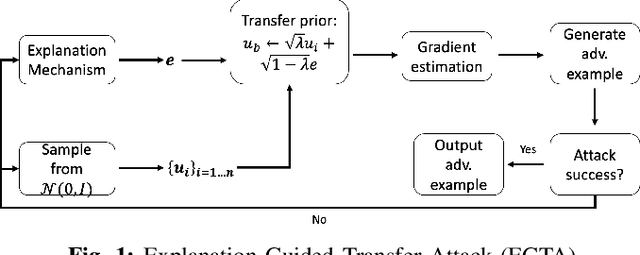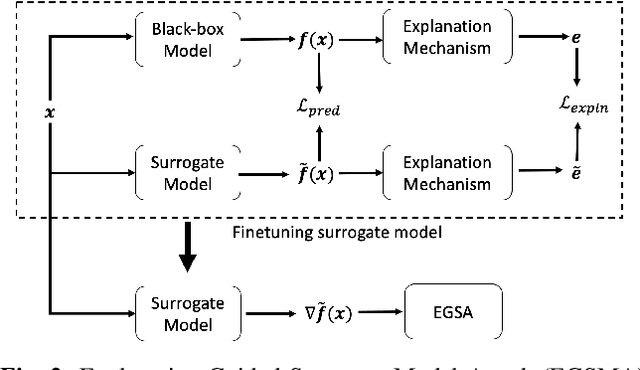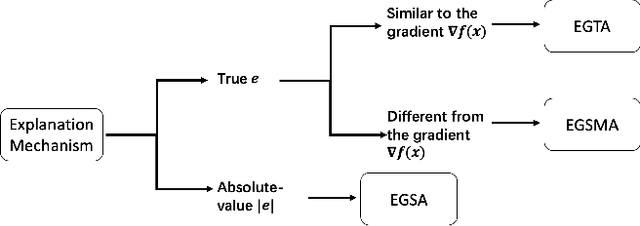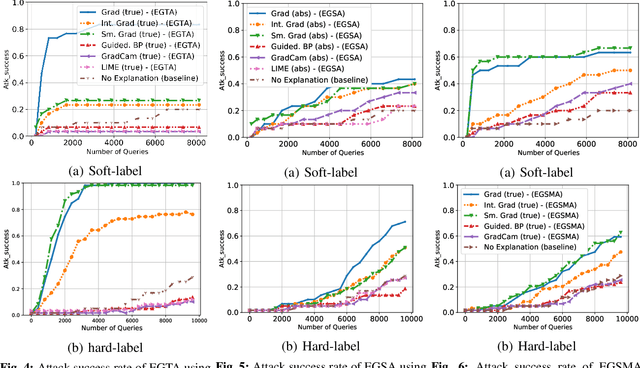Supriyo Chakraborty
IBM Research
Training Dynamics Underlying Language Model Scaling Laws: Loss Deceleration and Zero-Sum Learning
Jun 05, 2025Abstract:This work aims to understand how scaling improves language models, specifically in terms of training dynamics. We find that language models undergo loss deceleration early in training; an abrupt slowdown in the rate of loss improvement, resulting in piecewise linear behaviour of the loss curve in log-log space. Scaling up the model mitigates this transition by (1) decreasing the loss at which deceleration occurs, and (2) improving the log-log rate of loss improvement after deceleration. We attribute loss deceleration to a type of degenerate training dynamics we term zero-sum learning (ZSL). In ZSL, per-example gradients become systematically opposed, leading to destructive interference in per-example changes in loss. As a result, improving loss on one subset of examples degrades it on another, bottlenecking overall progress. Loss deceleration and ZSL provide new insights into the training dynamics underlying language model scaling laws, and could potentially be targeted directly to improve language models independent of scale. We make our code and artefacts available at: https://github.com/mirandrom/zsl
Critique-Guided Distillation: Improving Supervised Fine-tuning via Better Distillation
May 16, 2025Abstract:Supervised fine-tuning (SFT) using expert demonstrations often suffer from the imitation problem, where the model learns to reproduce the correct responses without \emph{understanding} the underlying rationale. To address this limitation, we propose \textsc{Critique-Guided Distillation (CGD)}, a novel multi-stage framework that integrates teacher model generated \emph{explanatory critiques} and \emph{refined responses} into the SFT process. A student model is then trained to map the triplet of prompt, teacher critique, and its own initial response to the corresponding refined teacher response, thereby learning both \emph{what} to imitate and \emph{why}. Using entropy-based analysis, we show that \textsc{CGD} reduces refinement uncertainty and can be interpreted as a Bayesian posterior update. We perform extensive empirical evaluation of \textsc{CGD}, on variety of benchmark tasks, and demonstrate significant gains on both math (AMC23 +17.5%) and language understanding tasks (MMLU-Pro +6.3%), while successfully mitigating the format drift issues observed in previous critique fine-tuning (CFT) techniques.
Dense Backpropagation Improves Training for Sparse Mixture-of-Experts
Apr 18, 2025Abstract:Mixture of Experts (MoE) pretraining is more scalable than dense Transformer pretraining, because MoEs learn to route inputs to a sparse set of their feedforward parameters. However, this means that MoEs only receive a sparse backward update, leading to training instability and suboptimal performance. We present a lightweight approximation method that gives the MoE router a dense gradient update while continuing to sparsely activate its parameters. Our method, which we refer to as Default MoE, substitutes missing expert activations with default outputs consisting of an exponential moving average of expert outputs previously seen over the course of training. This allows the router to receive signals from every expert for each token, leading to significant improvements in training performance. Our Default MoE outperforms standard TopK routing in a variety of settings without requiring significant computational overhead. Code: https://github.com/vatsal0/default-moe.
SaViD: Spectravista Aesthetic Vision Integration for Robust and Discerning 3D Object Detection in Challenging Environments
Mar 26, 2025Abstract:The fusion of LiDAR and camera sensors has demonstrated significant effectiveness in achieving accurate detection for short-range tasks in autonomous driving. However, this fusion approach could face challenges when dealing with long-range detection scenarios due to disparity between sparsity of LiDAR and high-resolution camera data. Moreover, sensor corruption introduces complexities that affect the ability to maintain robustness, despite the growing adoption of sensor fusion in this domain. We present SaViD, a novel framework comprised of a three-stage fusion alignment mechanism designed to address long-range detection challenges in the presence of natural corruption. The SaViD framework consists of three key elements: the Global Memory Attention Network (GMAN), which enhances the extraction of image features through offering a deeper understanding of global patterns; the Attentional Sparse Memory Network (ASMN), which enhances the integration of LiDAR and image features; and the KNNnectivity Graph Fusion (KGF), which enables the entire fusion of spatial information. SaViD achieves superior performance on the long-range detection Argoverse-2 (AV2) dataset with a performance improvement of 9.87% in AP value and an improvement of 2.39% in mAPH for L2 difficulties on the Waymo Open dataset (WOD). Comprehensive experiments are carried out to showcase its robustness against 14 natural sensor corruptions. SaViD exhibits a robust performance improvement of 31.43% for AV2 and 16.13% for WOD in RCE value compared to other existing fusion-based methods while considering all the corruptions for both datasets. Our code is available at \href{https://github.com/sanjay-810/SAVID}
MYCROFT: Towards Effective and Efficient External Data Augmentation
Oct 11, 2024



Abstract:Machine learning (ML) models often require large amounts of data to perform well. When the available data is limited, model trainers may need to acquire more data from external sources. Often, useful data is held by private entities who are hesitant to share their data due to propriety and privacy concerns. This makes it challenging and expensive for model trainers to acquire the data they need to improve model performance. To address this challenge, we propose Mycroft, a data-efficient method that enables model trainers to evaluate the relative utility of different data sources while working with a constrained data-sharing budget. By leveraging feature space distances and gradient matching, Mycroft identifies small but informative data subsets from each owner, allowing model trainers to maximize performance with minimal data exposure. Experimental results across four tasks in two domains show that Mycroft converges rapidly to the performance of the full-information baseline, where all data is shared. Moreover, Mycroft is robust to noise and can effectively rank data owners by utility. Mycroft can pave the way for democratized training of high performance ML models.
Quantum Inverse Contextual Vision Transformers (Q-ICVT): A New Frontier in 3D Object Detection for AVs
Aug 20, 2024



Abstract:The field of autonomous vehicles (AVs) predominantly leverages multi-modal integration of LiDAR and camera data to achieve better performance compared to using a single modality. However, the fusion process encounters challenges in detecting distant objects due to the disparity between the high resolution of cameras and the sparse data from LiDAR. Insufficient integration of global perspectives with local-level details results in sub-optimal fusion performance.To address this issue, we have developed an innovative two-stage fusion process called Quantum Inverse Contextual Vision Transformers (Q-ICVT). This approach leverages adiabatic computing in quantum concepts to create a novel reversible vision transformer known as the Global Adiabatic Transformer (GAT). GAT aggregates sparse LiDAR features with semantic features in dense images for cross-modal integration in a global form. Additionally, the Sparse Expert of Local Fusion (SELF) module maps the sparse LiDAR 3D proposals and encodes position information of the raw point cloud onto the dense camera feature space using a gating point fusion approach. Our experiments show that Q-ICVT achieves an mAPH of 82.54 for L2 difficulties on the Waymo dataset, improving by 1.88% over current state-of-the-art fusion methods. We also analyze GAT and SELF in ablation studies to highlight the impact of Q-ICVT. Our code is available at https://github.com/sanjay-810/Qicvt Q-ICVT
AYDIV: Adaptable Yielding 3D Object Detection via Integrated Contextual Vision Transformer
Feb 12, 2024Abstract:Combining LiDAR and camera data has shown potential in enhancing short-distance object detection in autonomous driving systems. Yet, the fusion encounters difficulties with extended distance detection due to the contrast between LiDAR's sparse data and the dense resolution of cameras. Besides, discrepancies in the two data representations further complicate fusion methods. We introduce AYDIV, a novel framework integrating a tri-phase alignment process specifically designed to enhance long-distance detection even amidst data discrepancies. AYDIV consists of the Global Contextual Fusion Alignment Transformer (GCFAT), which improves the extraction of camera features and provides a deeper understanding of large-scale patterns; the Sparse Fused Feature Attention (SFFA), which fine-tunes the fusion of LiDAR and camera details; and the Volumetric Grid Attention (VGA) for a comprehensive spatial data fusion. AYDIV's performance on the Waymo Open Dataset (WOD) with an improvement of 1.24% in mAPH value(L2 difficulty) and the Argoverse2 Dataset with a performance improvement of 7.40% in AP value demonstrates its efficacy in comparison to other existing fusion-based methods. Our code is publicly available at https://github.com/sanjay-810/AYDIV2
OrthoSeisnet: Seismic Inversion through Orthogonal Multi-scale Frequency Domain U-Net for Geophysical Exploration
Jan 09, 2024Abstract:Seismic inversion is crucial in hydrocarbon exploration, particularly for detecting hydrocarbons in thin layers. However, the detection of sparse thin layers within seismic datasets presents a significant challenge due to the ill-posed nature and poor non-linearity of the problem. While data-driven deep learning algorithms have shown promise, effectively addressing sparsity remains a critical area for improvement. To overcome this limitation, we propose OrthoSeisnet, a novel technique that integrates a multi-scale frequency domain transform within the U-Net framework. OrthoSeisnet aims to enhance the interpretability and resolution of seismic images, enabling the identification and utilization of sparse frequency components associated with hydrocarbon-bearing layers. By leveraging orthogonal basis functions and decoupling frequency components, OrthoSeisnet effectively improves data sparsity. We evaluate the performance of OrthoSeisnet using synthetic and real datasets obtained from the Krishna-Godavari basin. Orthoseisnet outperforms the traditional method through extensive performance analysis utilizing commonly used measures, such as mean absolute error (MAE), mean squared error (MSE), and structural similarity index (SSIM) https://github.com/supriyo100/Orthoseisnet.
Knowledge from Uncertainty in Evidential Deep Learning
Oct 19, 2023Abstract:This work reveals an evidential signal that emerges from the uncertainty value in Evidential Deep Learning (EDL). EDL is one example of a class of uncertainty-aware deep learning approaches designed to provide confidence (or epistemic uncertainty) about the current test sample. In particular for computer vision and bidirectional encoder large language models, the `evidential signal' arising from the Dirichlet strength in EDL can, in some cases, discriminate between classes, which is particularly strong when using large language models. We hypothesise that the KL regularisation term causes EDL to couple aleatoric and epistemic uncertainty. In this paper, we empirically investigate the correlations between misclassification and evaluated uncertainty, and show that EDL's `evidential signal' is due to misclassification bias. We critically evaluate EDL with other Dirichlet-based approaches, namely Generative Evidential Neural Networks (EDL-GEN) and Prior Networks, and show theoretically and empirically the differences between these loss functions. We conclude that EDL's coupling of uncertainty arises from these differences due to the use (or lack) of out-of-distribution samples during training.
On the amplification of security and privacy risks by post-hoc explanations in machine learning models
Jun 28, 2022



Abstract:A variety of explanation methods have been proposed in recent years to help users gain insights into the results returned by neural networks, which are otherwise complex and opaque black-boxes. However, explanations give rise to potential side-channels that can be leveraged by an adversary for mounting attacks on the system. In particular, post-hoc explanation methods that highlight input dimensions according to their importance or relevance to the result also leak information that weakens security and privacy. In this work, we perform the first systematic characterization of the privacy and security risks arising from various popular explanation techniques. First, we propose novel explanation-guided black-box evasion attacks that lead to 10 times reduction in query count for the same success rate. We show that the adversarial advantage from explanations can be quantified as a reduction in the total variance of the estimated gradient. Second, we revisit the membership information leaked by common explanations. Contrary to observations in prior studies, via our modified attacks we show significant leakage of membership information (above 100% improvement over prior results), even in a much stricter black-box setting. Finally, we study explanation-guided model extraction attacks and demonstrate adversarial gains through a large reduction in query count.
 Add to Chrome
Add to Chrome Add to Firefox
Add to Firefox Add to Edge
Add to Edge